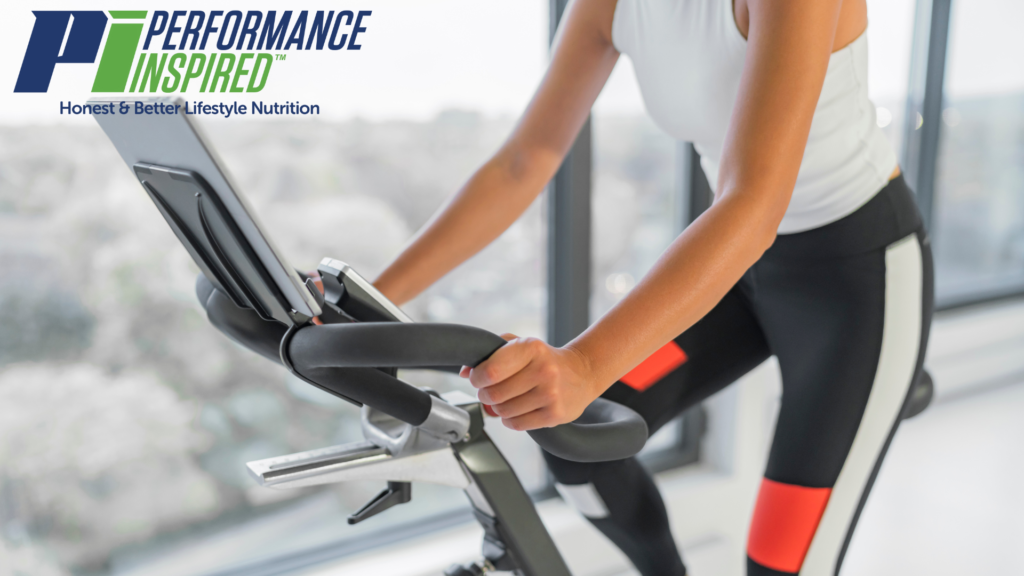High-Intensity Interval Training

Are you looking for a different way to work out? Do you feel like you don’t have enough time in your day to spend an hour or more at the gym? If you answered yes to either of these questions, HIIT—or high-intensity interval training—might be right for you.
What is HIIT?
High-intensity interval training is a type of workout in which you alternate short but high-intensity intervals with longer and slower recovery intervals.
Why would you do this?
According to WebMD, HIIT “can save you time: You don’t have to work out as long as you would if you were keeping a steady pace. You’ll lose weight, build muscle, and boost your metabolism. Plus there’s a post-workout bonus: Your body will burn calories for about 2 hours after you exercise.”
Sounds awesome, right? But before we look deeper into what HIIT entails and why it can be a beneficial workout, you need to learn a couple important things about heart rates so that you know how far to push yourself during the HIIT workout.
First, you have to calculate your maximum heart rate. To do so, simply subtract your age from 220. So, if you’re 40 years old, your maximum heart rate would be 180.
Then you calculate your target heart rate. According to eMedicineHealth, “For moderate-intensity physical activity, an adult’s target heart rate should be between 64% and 76% of the maximum heart rate,” and “for vigorous-intensity activities, an adult’s target heart rate should be between 77% and 93% of the maximum heart rate.”
To find the desired portion of your maximum heart rate, simply multiply the decimal amount by whatever your maximum heart rate is. If your max is 180 and you want to exercise to 76% of it, multiply .76 x 180. That means you should aim for a heart rate of just under 137 for that part of the workout.
Now that you have figured out the target heart rate numbers, you can explore how hard you have to work to accomplish this type of workout.
The American College of Sports Medicine explains that the goal of HIIT is to get your heart up to 80% to 95% of a your maximum heart rate during the strenuous intervals and then allow it to slow by getting it to 40% to 50% of your maximum heart rate for the recovery periods. Ideally, the workout will continue alternating the strenuous and recovery periods for 15-30 minutes.
The great part is that it’s up to you how quickly you want to alternate the two periods. It can be any amount of time that you want, though if you’re just starting out, 30 seconds will be plenty until you feel comfortable increasing the time.
What are the benefits of HIIT?
HIIT has been shown to have numerous health benefits, which is why so many people like these routines.
In addition to being a shorter workout, it can also be done with as much or as little workout equipment as needed—which means you can do it at home.
For instance, you can jog or march in place at a rapid pace for 30 seconds, then slow down for 1 minute. Then repeat for your desired amount of time. Typically, your recovery intervals will be about twice as long as the high-intensity interval.
HIIT training helps with the following:
- Aerobic and anaerobic fitness, which helps boost endurance and stamina
- Helps regulate blood sugar levels
- Improves cardiovascular health
- Improves insulin sensitivity (which helps the muscles you exercise better use glucose for fuel to make energy)
- Helps reduce cholesterol
- Helps burn more fat than a regular workout
In addition, HIIT workouts burn more calories than a traditional workout. Healthline reported that one study found that “researchers found that HIIT burned 25–30% more calories than the other forms of exercise.”
Further, when you do an HIIT workout, you continue to burn more calories for about two hours afterward. According to the American College of Sports Medicine, this “post-exercise period is called ‘EPOC,’ which stands for excess postexercise oxygen consumption. This is generally about a 2-hour period after an exercise bout where the body is restoring itself to pre-exercise levels, and thus using more energy. Because of the vigorous contractile nature of HIIT workouts, the EPOC generally tends to be modestly greater, adding about 6 to 15% more calories to the overall workout energy expenditure.”
That’s exciting news, especially for people who want to lose weight!
So how do I begin?
First, make sure you are healthy enough to start a strenuous routine. If you aren’t sure, check with your doctor, as HIIT does increase your heart rate dramatically.
Second, start slowly! This is a difficult workout, so while you will want to push yourself a bit, you don’t want to push so hard that you injure yourself or tear muscles. Always warm up before the workout and cool down after.
Third, get creative! You can develop your own HIIT workout, and you can vary it depending on what types of equipment you have.
For instance, Very Well Fit has an excellent plan for beginners who don’t belong to a gym or who don’t have exercise equipment. It suggests something like this:
After a thorough warm-up, you choose a very high-intensity exercise, such as burpees, sprinting all-out, or cycling as fast as you can. Then, do about 30 seconds of your all-out exercise, followed by a recovery exercise, such as jogging or lunges, for about one minute, repeating those intervals for about 20 minutes or so, depending on your fitness level. . . .
A HIIT workout using a stationary bike could consist of 30 seconds of cycling as fast as possible with high resistance, followed by several minutes of slow, easy cycling with low resistance. This would be considered one “round” or “repetition” of HIIT, and you would typically complete 4–6 reps in one workout.
Simple, right? Well, the concept is simple, but the workout can be tough!
How often should I do HIIT?
If you are just beginning, start with one HIIT training a week. Then increase to two or more with a day or two between them. Let your body guide you. You will likely be sore after your first few workouts. That’s okay. Just don’t injure yourself.
Healthline offers three great tips for beginners:
- Choose a workout that you’re familiar with, not one that you have never done. If you have not gone jogging in several years, do not start out with sprints. Start with something low impact like an exercise bike, an elliptical machine, or even some squats.
- If you suffer from joint pain, try a low-impact routine, like swimming.
- Keep your high-intensity periods to 30 seconds or less. Anything higher will be tough to sustain, especially if you do not regularly exercise.
If you’re not sure which exercises to start with, check out these suggestions from Healthline:
- Using a stationary bike, pedal as hard and fast as possible for 30 seconds. Then, pedal at a slow, easy pace for 2–4 minutes. Repeat this pattern for 15–30 minutes.
- After jogging to warm up, sprint as fast as you can for 15 seconds. Then, walk or jog at a slow pace for 1–2 minutes. Repeat this pattern for 10–20 minutes.
- Perform squat jumps as quickly as possible for 30–90 seconds. Then, stand or walk for 30–90 seconds. Repeat this pattern for 10–20 minutes.
HIIT is not for everyone and it’s not easy, but it has some great benefits and can be extremely rewarding. So evaluate your health and your fitness level, check with your doctor, and then push yourself to increase your stamina and endurance. You will see results in no time!
#performanceinspired #inspiredtobebetter #markwahlberg #blogpost #hiit #hiitoworkout #fitnessblog



